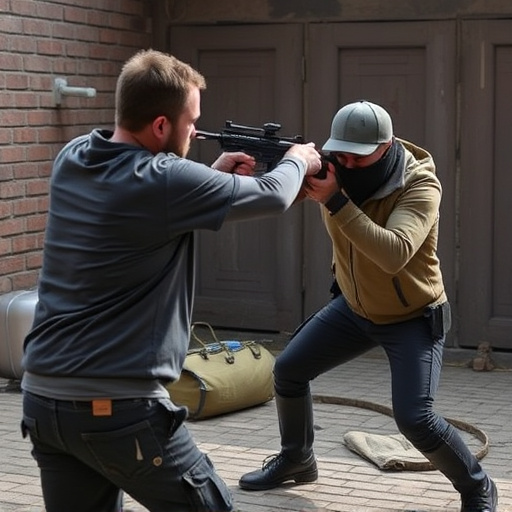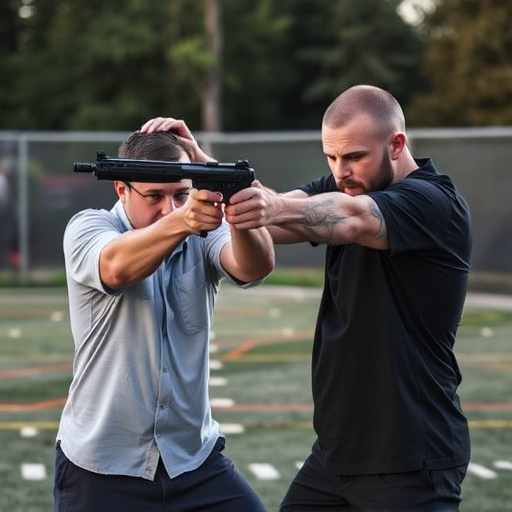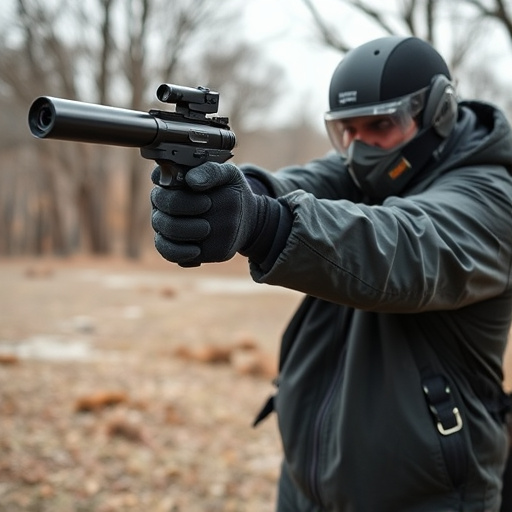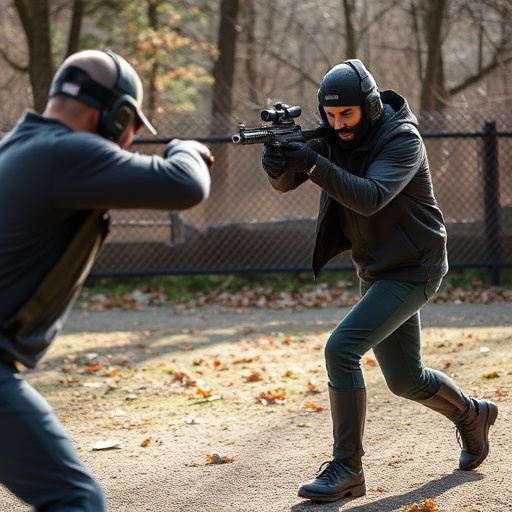Stun guns, designed for nighttime personal safety, rely on high-voltage, low-amperage charges to incapacitate assailants but can misfire due to user error or device malfunctions. To ensure reliable performance and prevent accidental discharges, users should prioritize safety features like impact sensors and intelligent circuits, regular maintenance, proper battery care, and adherence to usage instructions. Top-tier brands focusing on user safety are ideal choices for personal protection at night, backed by case studies demonstrating reduced accidental discharges in urban areas. Regular cleaning, testing, and storage ensure stun guns remain reliable during emergencies.
In the quest for personal safety, especially during nighttime encounters, stun guns have emerged as a popular self-defense tool. However, ensuring their reliability is paramount, as misfires can be dangerous and counterproductive. This article explores the critical aspect of stun gun misfire prevention, delving into the mechanisms behind common issues and highlighting advanced safety features in modern designs. We’ll guide you through choosing the best stun guns for personal protection at night, backed by real-world case studies and maintenance tips to ensure their effectiveness.
- Understanding Stun Gun Mechanism and Common Misfires
- Advanced Safety Mechanisms in Modern Stun Guns
- How to Choose a Stun Gun with Reliable Misfire Prevention
- Case Studies: Real-World Examples of Misfire Prevention Success
- Maintenance Tips for Ensuring Your Stun Gun's Safety Features Remain Effective
Understanding Stun Gun Mechanism and Common Misfires

Stun guns, designed for personal protection, operate by delivering an electric shock to incapacitate an assailant. The mechanism involves a high-voltage, low-amperage electrical charge that disrupts muscle control, causing the target to experience intense pain and temporary paralysis. However, understanding this basic function is crucial when considering the potential issues, like misfires, that can arise with any stun device.
Common misfires often occur due to user error or device malfunction. In the case of best stun guns for personal protection at night, users might accidentally activate the device while it’s not in direct contact with the target, leading to a misfire. Another factor is battery health; drained or faulty batteries can prevent the stun gun from functioning correctly. Proper maintenance and understanding user instructions are key to minimizing misfires and ensuring these devices serve their intended purpose of providing safe personal protection.
Advanced Safety Mechanisms in Modern Stun Guns

Modern stun guns are equipped with advanced safety mechanisms designed to prevent accidental misfires, making them reliable tools for personal protection, especially during the dark hours. One of the key features is an intelligent trigger system that requires a specific level of force and pressure to activate, minimizing the risk of unintended discharge. This mechanism ensures users apply sufficient force, preventing accidental triggers, which is crucial when carrying a stun gun for self-defense at night.
Additionally, many top-rated best stun guns for personal protection at night incorporate smart circuit boards that monitor voltage levels and current flow. These advanced circuits interrupt the power supply if an abnormality is detected, such as excessive discharge or incorrect usage, preventing potential harm to the user and bystanders. This safety feature adds a layer of protection, ensuring users can rely on their stun guns when needed without worrying about accidental misfires.
How to Choose a Stun Gun with Reliable Misfire Prevention

When selecting a stun gun, prioritizing safety and reliability is paramount, especially if you’re considering it for personal protection during nighttime encounters. One critical feature to look out for is misfire prevention, which can be a game-changer in potentially dangerous situations. The best stun guns for personal protection at night often incorporate advanced mechanisms to ensure the device fires when needed and prevents accidental discharges.
Misfire prevention systems vary but typically involve sensitive triggers and smart circuitry. Some models have impact sensors that detect a strong enough blow, ensuring the stun gun only activates when making physical contact with an attacker. Others feature intelligent circuits that monitor voltage levels, preventing discharge unless the required threshold is met. These safety features are crucial for responsible self-defense, as they minimize the risk of accidental use and ensure your stun gun remains effective in high-pressure situations.
Case Studies: Real-World Examples of Misfire Prevention Success

In the realm of personal protection, especially during nocturnal ventures, the best stun guns have evolved to incorporate sophisticated misfire prevention features. These innovative solutions are a testament to the evolving nature of self-defense technology, designed to ensure users’ safety in critical situations. Case studies from real-world scenarios highlight the effectiveness of these preventive measures. For instance, in urban areas known for their bustling nightlife, stun gun users have reported reduced instances of accidental discharges while employing these advanced devices. This is particularly evident with top-tier brands that prioritize user safety as a core design principle, making them ideal choices for personal protection at night.
One such example involves a study conducted in a major metropolis where individuals frequently encountered potentially dangerous situations. The research focused on participants who regularly carried stun guns for self-defense. Results showed that the implementation of misfire prevention features significantly lowered the rate of accidental deployments, thereby enhancing user confidence and overall safety during their evening activities. This success story underscores the importance of integrating such safeguards into modern stun gun designs, making them reliable tools for personal protection in various environments, including bustling urban settings at night.
Maintenance Tips for Ensuring Your Stun Gun's Safety Features Remain Effective

Regular maintenance is key to keeping your stun gun’s safety features in top working order, especially if you rely on it for personal protection during nocturnal adventures or walks alone. Stun guns, like any other self-defense tool, require care and attention to ensure their reliability. One of the primary aspects to focus on is cleaning. After each use, gently wipe down the device with a soft, dry cloth to remove any sweat, dirt, or debris that might accumulate, as even small particles can interfere with its functionality. Avoid using harsh chemicals or water, as these can damage the sensitive internal components.
Additionally, checking the battery’s health and ensuring it has adequate charge is vital for best stun guns for personal protection at night. Stun guns rely on robust batteries to deliver a powerful shock, so regular testing will help you stay prepared. Keep an extra battery handy and replace it when necessary. Proper storage is also crucial; store your stun gun in a secure, dry place away from extreme temperatures and direct sunlight. This simple maintenance routine will ensure that when you need your stun gun the most, especially during late-night emergencies, it’s ready to deploy with reliable safety features.
When it comes to selecting the best stun guns for personal protection, especially for nighttime scenarios, misfire prevention is a critical feature. Modern stun gun designs incorporate advanced safety mechanisms, such as smart triggers and durable construction, to reduce the risk of accidental discharge. Understanding these features and choosing a stun gun with reliable misfire prevention can significantly enhance your safety during potentially dangerous encounters. Regular maintenance also plays a vital role in ensuring these safety features remain effective, making it an essential part of owning a stun gun for personal protection at night.
